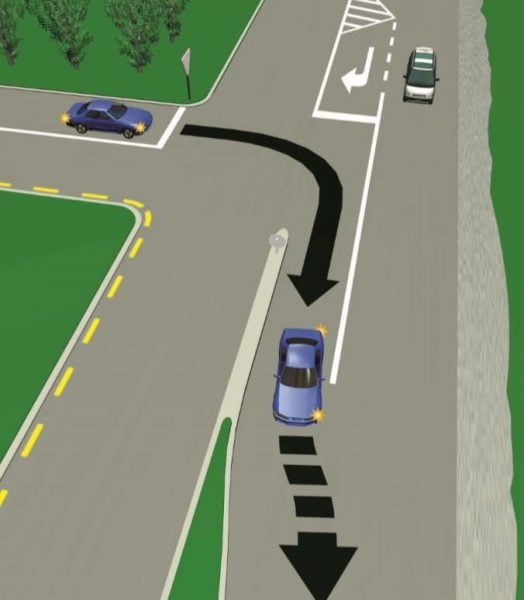The car in the left lane, the one that continues straight, would have the right of way. It’s a little off topic, but in newfoundland when a temporary passing lane was ending, the left lane was force to merge with the right lane (much like on the bay bridge).


This is often call a zipper merge.



Left lane ends merge right rules. Merge (traffic) in traffic engineering, a merge is the point where two streams of traffic travelling in the same direction from multiple roads or in multiple lanes on the same road are required to merge into a single lane. Note that two lanes merging into one (e.g. That establishes priority for the right lane so that the passing car must plan ahead.
Follow the s lane to the left then signal right to enter the turning lane both lanes come to an end. Well, there is a difference between a merge and a lane ending. Drivers already on the highway have a responsibility to allow others to merge safely.
Car a must give way to car b if it can’t merge safely. Asked on 5/14/07, 5:13 pm When it is a genuine merge, then you are required to take turns.
Some drivers let those entering the freeway have right of way by moving. The driver of the vehicle traveling in the right lane, the. (from above, it looks a bit like teeth on a zipper coming together.)
Always use your indicator to signal your intentions to other drivers when merging. When a lane ends, a sign gives instructions. The warning right lane merge sign is used to warn motorists of upcoming merging movements either left or right may be encountered.
If you're already in that lane, you're not required by. Curve sign a curve sign is used to warn of a curve where the recommended speed is less than the posted speed limit for the highway. Merging on roads that have lane markings.
If you are in the right lane you must merge left, yielding to traffic driving in the left lane. Merging when the number of lanes is reduced. It might vary from state to state, but i would assume that it is the same with most.
Move into the main road when it’s safe to do so, maintaining a speed consistent with the vehicles around you. On roads where there are lanes marked on the road —if your lane comes to an end, you must give way to traffic already in the lane you are moving to. According to michigan law, people who merge do not have the right away, they must yield and the people in the correct straight away lane have the right.
What we all should be doing is called the zipper merge, or reißverschlusssystem, as the germans call it. What is illinois law and who is right? This is an article about merging, not about lane ending, which is also dealt with on the site in a separate article.
Then turn off your signal light. If your lane is ending, it is your responsibility to merge. Changing lanes when a marked lane ends.
If there are dual lanes, and the lane you are in ends, give way to the vehicles in the lane you are moving into. There are 2 different give way rules for merging. There's no rule that says you have to let in merging drivers.
You may legally merge once you’re past the solid line separating the acceleration lane from the main road. In this example, vehicle a (white) must give way to vehicle b (yellow). Drivers must never attempt to merge onto a highway directly from the acceleration lane using the gore area.
In this system, every car in the lane that's ending drives all the way up to the front of the line and takes turns merging with the other lane of traffic. Lane ends/merge left two lanes of traffic will soon become one lane of traffic. Vehicles should merge like a zip for the most effective traffic flow.
This statute applies to lane changes as well as vehicles entering the roadway. If you are turning right, start from the right lane. Car a (green) is ahead and therefore car b gives way the left lane ends.
When it is a lane ending, then the responsibility is that the driver leaving the lane that is ending must do so without affecting others. When you are travelling on a road without lane markings and the number of lanes or lines of traffic is reduced, you must merge by giving way to any vehicle that is ahead of you. A merge may be a permanent road feature, for example at the end of a dual carriageway, or a temporary feature, common.
Left lane must turn left Having reached an appropriate speed and signaled your intention to turn, you should use this area to merge left onto the highway. Make right turns from as close to the right edge of the roadway as possible.
But, it is a nice thing to do if you can, police say.
















0 komentar:
Posting Komentar